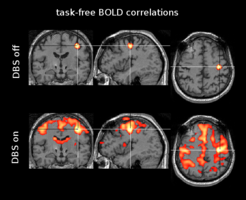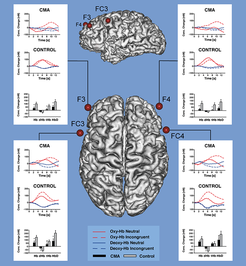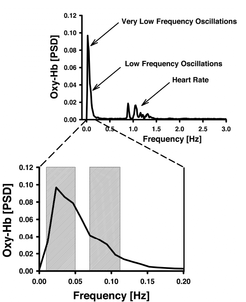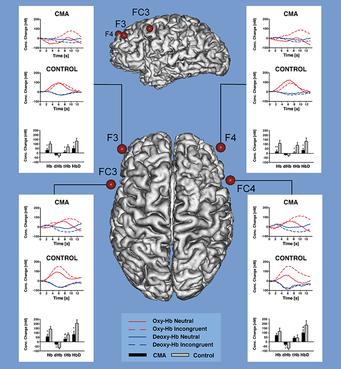Projects
Stimulating your self

Parkinson’s disease is a movement disorder that is related to dysfunctions in dopaminergic circuits. Frequently, it leads to cognitive deficits. The project explores effects of dopaminergic agents (L-DOPA) or deep brain stimulation on the blood oxygenation level dependent (BOLD) signal in Parkinson’s disease during a simple finger-tapping paradigm and in task-free situation (in order to investigate low-frequency oscillations). Here, we are cooperating with Robert Jech from the Department of Neurology at the Charles University in Prague.
Investigating the inattentive brain

Optical imaging (NIRS) is a method that is particularly suited to investigations of cognitive development and its diseases. Accordingly, we applied the method to children suffering from attention deficit hyperactivity disorder (ADHD). We were able to demonstrate that functions of the prefrontal cortex are altered during a Stroop task. Subsequent studies aim to identify treatment effects. Another part of this project investigates cerebral microangiopathy that finally leads to vascular dementia. We were able to demonstrate that alterations in frontal cortices are closely related to attentive and executive deficits. Besides optical imaging, we are applying MRI and SPECT.
Investigating the oscillating brain

This project investigates changes of spontaneous hemodynamic oscillations during healthy aging and dementia. Recently, using optical imaging (NIRS), we were able to show that spontaneous oscillations specifically around 0.1 Hz decrease in the visual cortex of the aging brain and in vascular dementia (cerebral microangiopathy). Interestingly, this kind of analysis in the frequency domain was much more sensitive in detecting changes than functional visual stimulation. Hence, we aim to establish our approach as a screening method to investigate vascular reagibility. In the future, we want to extend these approaches to optical topography, covering the whole outer brain & fMRI. Moreover, we will examine patients with Parkinson’s & Alzheimer’s Disease and explore the predictive potential of this method to address changes from mild cognitive impairment (MCI) to Alzheimer’s disease. Finally, we want to examine alterations in transgenic mouse models of healthy aging and Alzheimer’s disease.


